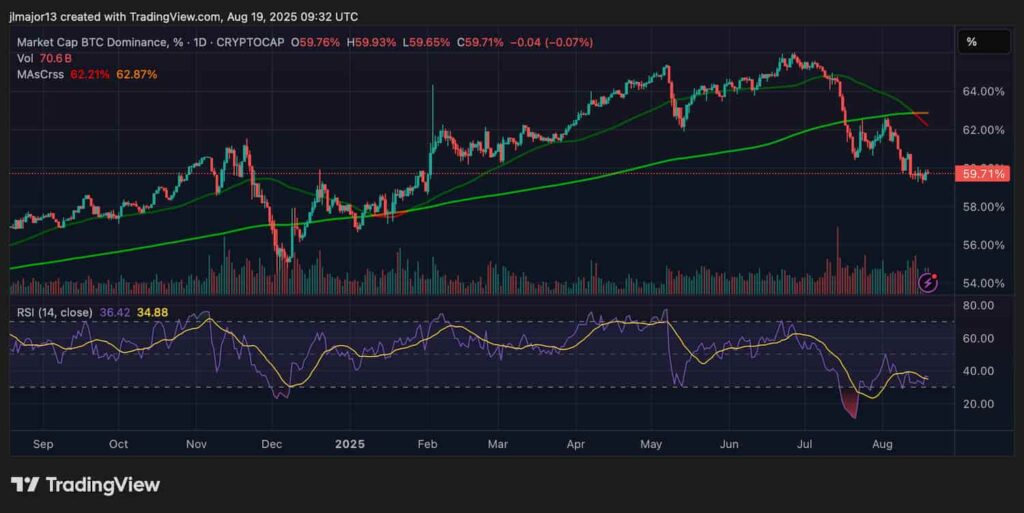Bitcoin’s dominance in the cryptocurrency market has slipped below 60%, and a rare Death Cross pattern has now formed on the dominance chart.
As of August 19, Bitcoin dominance stands at 59.71%, with the 50-day moving average crossing beneath the 200-day, a move that traditionally signals waning strength in the underlying trend.

Rather than focusing on Bitcoin’s price itself, dominance measures the share of total crypto market capitalization captured by BTC compared to altcoins. When dominance trends lower, it reflects capital rotation into alternative assets, often coinciding with periods of relative outperformance in Ethereum and other large-cap tokens.
Over the past three months, Bitcoin dominance has fallen sharply from highs above 64%, dragged lower by accelerating altcoin inflows and profit-taking after BTC’s mid-year rally. Volumes accompanying this decline remain elevated, with $70.6 billion traded over the last 24 hours, underlining heightened risk appetite outside of Bitcoin.
Bitcoin Death Cross technical analysis
From a technical perspective, the emergence of a Death Cross suggests that Bitcoin’s dominance may continue to weaken in the near term.
Historically, such breakdowns have opened the door to altcoin “mini-seasons,” where capital seeks higher beta plays across Layer-1 tokens, DeFi projects, and even mid-cap narratives. Still, it is important to note that a Death Cross on dominance is not always a guarantee of sustained altcoin strength, especially if broader market liquidity tightens.
Momentum indicators reinforce the shift. The Relative Strength Index (RSI) for BTC dominance currently sits at 36.42, hovering just above oversold conditions, while the moving average convergence points to persistent downward pressure. This combination strengthens the case that Bitcoin may cede further ground to altcoins unless a sharp reversal in market sentiment occurs.








